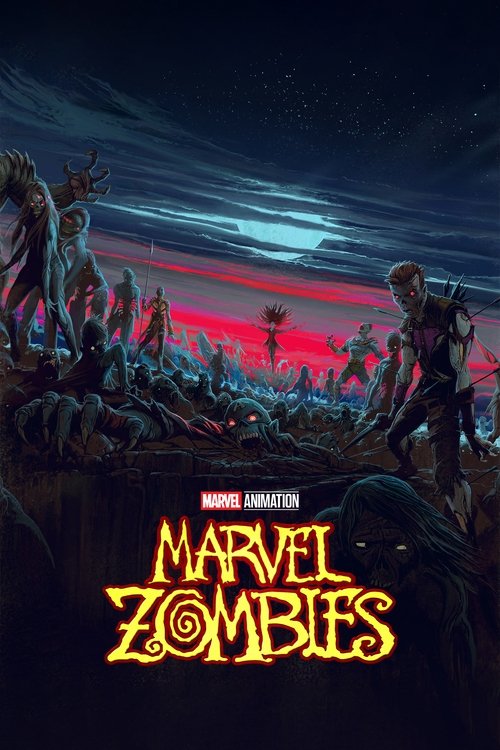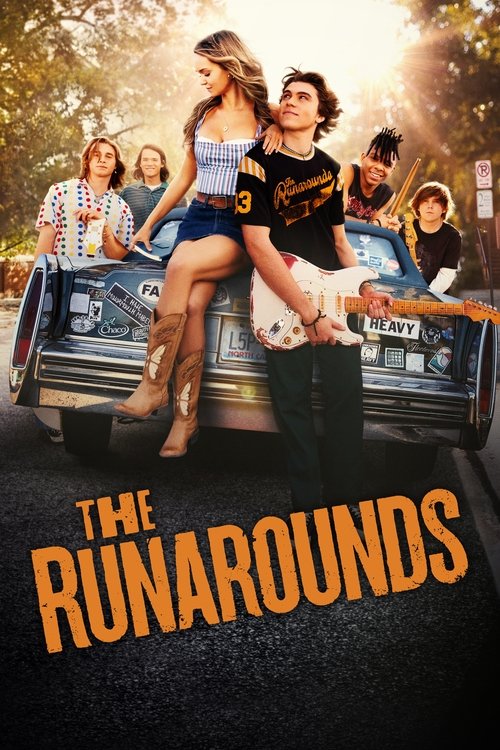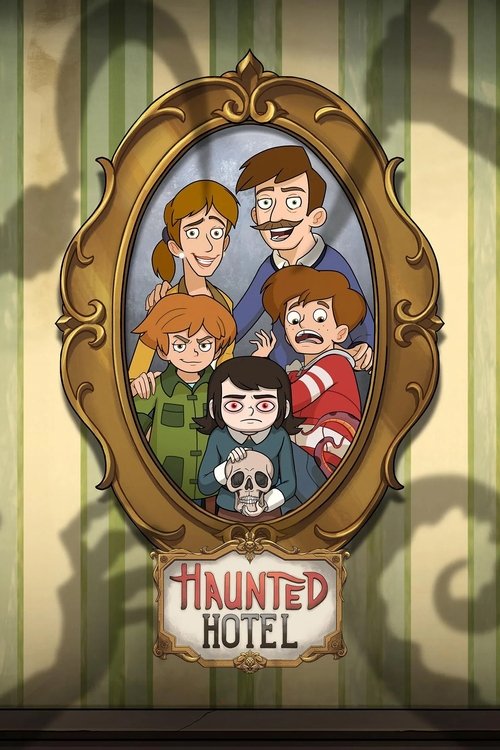
Ask Your Own Question
What is the plot?
The first sequence opens with Rex Henley, a globally famous country music star, struggling with a creative block. Frustrated by his inability to write new songs, Rex makes a drastic decision to kidnap several of his fans. He transports them to a dilapidated, impoverished town where he forces them to live under harsh conditions. His goal is to compel these fans to share their most personal and traumatic experiences, believing that mining their pain will inspire him to create a new hit song.
Once the fans are confined, Rex begins intense, often confrontational sessions where he demands they reveal their darkest secrets and life stories. The fans, initially resistant and frightened, gradually open up under pressure. Rex records these confessions obsessively, analyzing every detail for lyrical material. The atmosphere is tense and unsettling, with Rex oscillating between moments of manic enthusiasm and deep despair over his creative crisis.
Parallel to Rex's storyline, the show presents a vignette involving a hitman who violates his personal code. This hitman, known for his strict rules about his assignments, faces a moral dilemma when a target's circumstances challenge his usual detachment. The hitman's internal conflict escalates as he debates whether to complete the job or spare the target, ultimately leading to a confrontation that tests his principles and forces a critical decision.
Another sequence follows a man whose approach to elderly care becomes extreme. He takes on the responsibility of caring for an aging relative but becomes obsessively controlling, imposing strict routines and invasive monitoring. The relative's resistance grows, leading to escalating tension and a confrontation that exposes the caregiver's underlying fears and motivations.
An IT worker's story unfolds with increasing intensity as he becomes overly invested in his job. His obsession with control and perfectionism alienates colleagues and creates workplace conflict. The narrative details his escalating attempts to micromanage and dominate his environment, culminating in a breakdown that disrupts the office dynamic.
In a separate vignette, a man gives in during an apocalyptic evacuation. Faced with chaos and uncertainty, he surrenders to despair and lethargy rather than fighting for survival. This decision leads to a series of events where his passivity endangers others, forcing a reckoning with his choices as the evacuation deteriorates into disorder.
A day shadowing an action star turns disastrous when the star's public persona clashes with behind-the-scenes realities. The star's arrogance and erratic behavior create a series of mishaps, including a physical altercation with a crew member and a public relations nightmare. The sequence ends with the star isolated and facing the consequences of his actions.
The country singer's music session, presumably Rex Henley's, becomes nightmarish as his desperation grows. The fans' stories become darker and more disturbing, and Rex's mental state deteriorates. He lashes out violently at one fan who resists sharing, leading to a chaotic scene where the power dynamics shift unpredictably.
A vocalist inspired to make a powerful return struggles with self-doubt and external pressures. The sequence follows her rehearsals and interactions with a demanding producer, culminating in a breakthrough performance that reestablishes her confidence and artistic voice.
A school performance surprises parents when the children's act includes unexpected, provocative content. The parents' reactions range from shock to outrage, sparking heated debates about censorship and artistic freedom. The event escalates into a confrontation between parents and school officials.
One memorable evening with inseparable sisters reveals deep-seated rivalries and secrets. The sisters' interactions oscillate between affectionate and hostile, culminating in a revelation that changes their relationship dynamic permanently.
A romantic relationship in France changes course when one partner reveals a hidden agenda. The sequence details their conversations and confrontations, leading to a breakup marked by emotional intensity and unresolved tension.
A wife's final request shocks her spouse when she asks for an unconventional end-of-life arrangement. The spouse grapples with the moral and emotional implications, leading to a poignant and difficult decision.
A normal plane journey becomes frightening after hitting rough air. Passengers experience turbulence that escalates into panic. The flight crew's attempts to maintain order are detailed step by step, including communication breakdowns and passenger confrontations.
A forced landing leads to communication chaos. The pilot's decisions during the emergency are described in detail, including attempts to coordinate with air traffic control and manage passenger safety. The aftermath involves confusion and conflict among those on board.
A revolutionary game makes a powerful comeback, depicted through a group of enthusiasts who revive an old, controversial game. The narrative follows their preparations, the game's intense sessions, and the social dynamics that emerge, including rivalries and alliances.
A coffee request becomes an unstoppable phenomenon when a simple order at a café spirals out of control. The barista's attempts to manage the situation escalate into a farcical series of misunderstandings and conflicts with customers.
An inappropriate comment disrupts a workplace gathering, triggering a cascade of reactions among employees. The sequence details the comment's fallout, including confrontations, apologies, and shifting alliances.
A man evaluates a new gym's fit, both literally and figuratively. His physical assessment of the gym's equipment and environment parallels his internal evaluation of his own fitness and motivations, leading to a moment of self-realization.
Throughout the season, Tom Segura portrays multiple characters, including Rex Henley, Agent Six, Massimo, Cyrus, Steven Seagal, Joe, Brigitte, Barry the Sandwich Guy, and Mr. Hale, each involved in various vignettes that explore darkly comedic and provocative themes. The season's structure as a series of loosely connected sketches allows for a wide range of scenarios, all marked by a blend of humor and discomfort.
The season ends without a traditional resolution, leaving many storylines open-ended, reflecting the show's intent to provoke thought and challenge boundaries rather than provide neat conclusions.
What is the ending?
Short Narrative of the Ending
The ending of Bad Thoughts Season 1 does not follow a traditional narrative arc, as it is structured as a series of vignettes. Each episode presents multiple, unrelated stories that explore darkly comedic themes. The final episode concludes with a variety of sketches, including one that depicts a peak male fantasy scenario and another that highlights the fear of everything going bizarrely wrong. The series does not focus on character development or a continuous storyline, instead emphasizing the absurdity and humor in each vignette.
Expanded Narrative of the Ending
To describe the ending of Bad Thoughts Season 1 in detail, it's essential to understand that the show is composed of short, unrelated sketches. Each episode contains multiple vignettes, and the final episode, Episode 6, follows this format.
Episode 6
-
Inappropriate Comment: The episode begins with a scene where an inappropriate comment disrupts a workplace gathering. This sketch highlights the awkwardness and tension that can arise from such situations.
-
Gym Evaluation: Another sketch involves a man evaluating a new gym, both literally and figuratively. This scene explores themes of self-improvement and societal expectations.
-
Peak Male Fantasy: The last story of the season shows a peak male fantasy scenario, which is depicted in a way that exaggerates common male desires. This sketch is meant to be humorous and thought-provoking, pushing the boundaries of what is considered acceptable.
-
Fear of Everything Going Wrong: The episode concludes with a sketch that illustrates the baseless fear of everything going bizarrely wrong. This scenario is typical of the show's dark humor, emphasizing the absurdity of life's unpredictable nature.
Key Points and Character Fates
Since Bad Thoughts is structured as a series of vignettes, there are no main characters whose fates are resolved in a traditional narrative sense. Instead, each sketch features different characters, often played by the same actors in different roles. Tom Segura, for example, plays multiple characters throughout the series, including Rex Henley, Agent Six, and others. The show's focus is on the humor and absurdity of each scenario rather than character development or resolution.
The series does not provide a conclusive ending for any specific character, as each episode and sketch is designed to stand alone. The final episode maintains this format, ensuring that the show concludes on a note consistent with its overall style and tone.
Is there a post-credit scene?
The TV show "Bad Thoughts," season 1 (2025), does not have any publicly documented post-credit scene. Available information about the show, including reviews and descriptions, does not mention a post-credit scene or provide any details about one.
The search results that discuss post-credit scenes pertain to a different title, "The Bad Guys 2" (2025), which is unrelated to "Bad Thoughts". Therefore, there is no evidence that "Bad Thoughts" season 1 includes a post-credit scene, and no description of such a scene exists in the sources found.
What are the main themes explored in the story content of Bad Thoughts Season 1?
Bad Thoughts Season 1 explores six universal themes across its six episodes: jobs, success, family, love, communication, and health. Each episode loosely revolves around one of these themes, with some sketches spanning multiple episodes and including a mix of dark, crude, and highly inappropriate humor.
How does the show incorporate Tom Segura's stand-up material into the story content?
The series integrates much of Tom Segura's stand-up comedy into its sketches, including callbacks to his early material. For example, it features an awkward airplane conversation and adaptations of his father's Vietnam War stories into a problematic children's play. This blending of stand-up and sketch elements forms a core part of the show's narrative style.
What is the style and tone of the humor used in the story content of Bad Thoughts Season 1?
The humor in Bad Thoughts Season 1 is dark, crude, unapologetically offensive, and often highly inappropriate. It includes low-brow comedy, scatological jokes, sex jokes, and shock value, with a delivery that is deadpan and brutally honest. The show pushes boundaries and is not suitable for viewers seeking clean or lighthearted comedy.
Are there recurring storylines or characters throughout the season?
Some sketches in Bad Thoughts Season 1 play through more than one episode, indicating recurring storylines. However, the show is structured as a variety sketch comedy series rather than a continuous narrative with recurring characters. The focus is more on thematic exploration and comedic bits than on character development.
How does the show balance moments of humor with darker or more uncomfortable content?
While Bad Thoughts Season 1 is filled with dark and sometimes over-the-top obscene humor, there are moments of brilliance and genuine belly laughs interspersed throughout. The show balances its shock value and crude jokes with creative setups and occasionally thought-provoking content, though some viewers find the darker content overwhelming or off-putting.
Is this family friendly?
The TV show Bad Thoughts, Season 1 (2025), is not family friendly and is intended for adult audiences only. It is rated TV-MA and R for "crude humor" and "injury detail".
Potentially objectionable or upsetting aspects for children or sensitive viewers include:
- Frequent sexual taboos and explicit sexual jokes throughout the episodes.
- Crude bathroom humor and offensive language, including children using curse words in a school play setting.
- Scenes involving violence or aggressive behavior, such as a customer assaulting a barista over a minor issue.
- Depictions of sexual activity involving elderly nursing home residents, which may be disturbing or offensive.
- Overall, the show leans heavily into dark, shocking, and taboo-breaking comedy that some viewers may find disturbing or in poor taste.
The humor is described as "fearless, sick-minded, and brilliantly wrong," with a strong reliance on shock value and blue humor. Sensitive viewers or children are likely to find the content inappropriate and potentially upsetting.






















